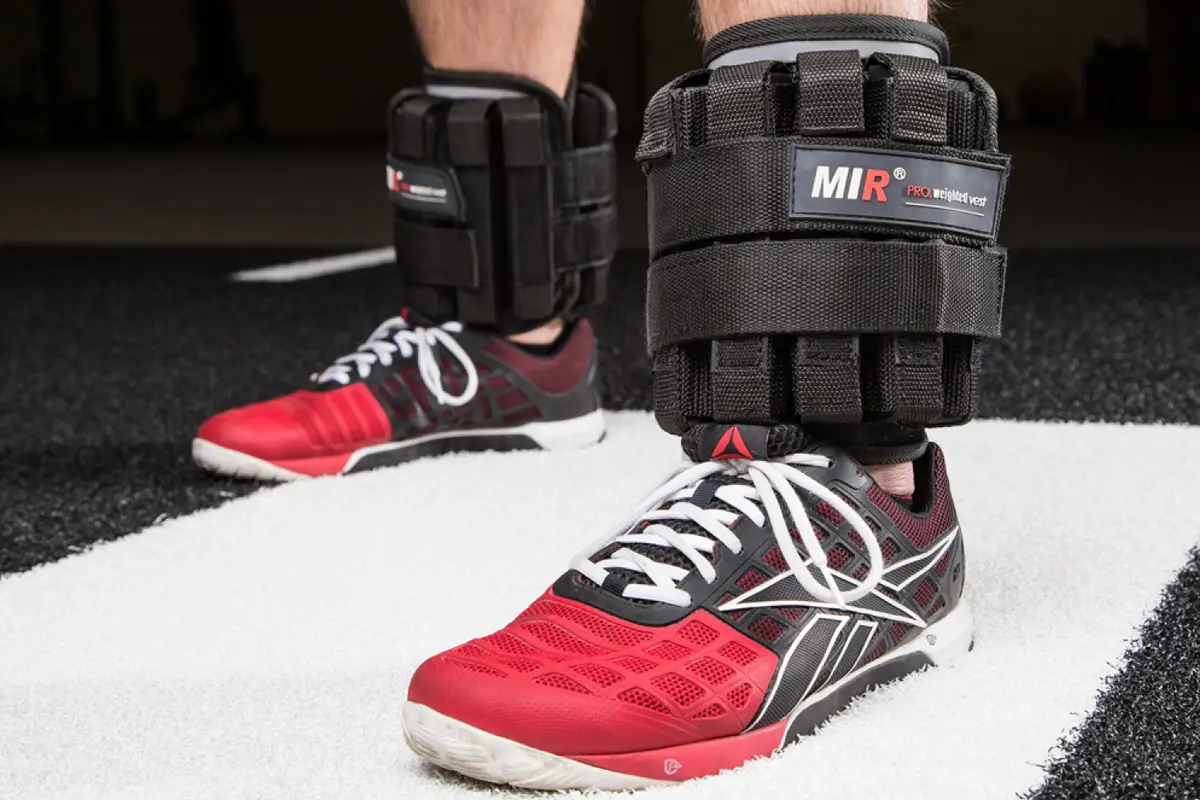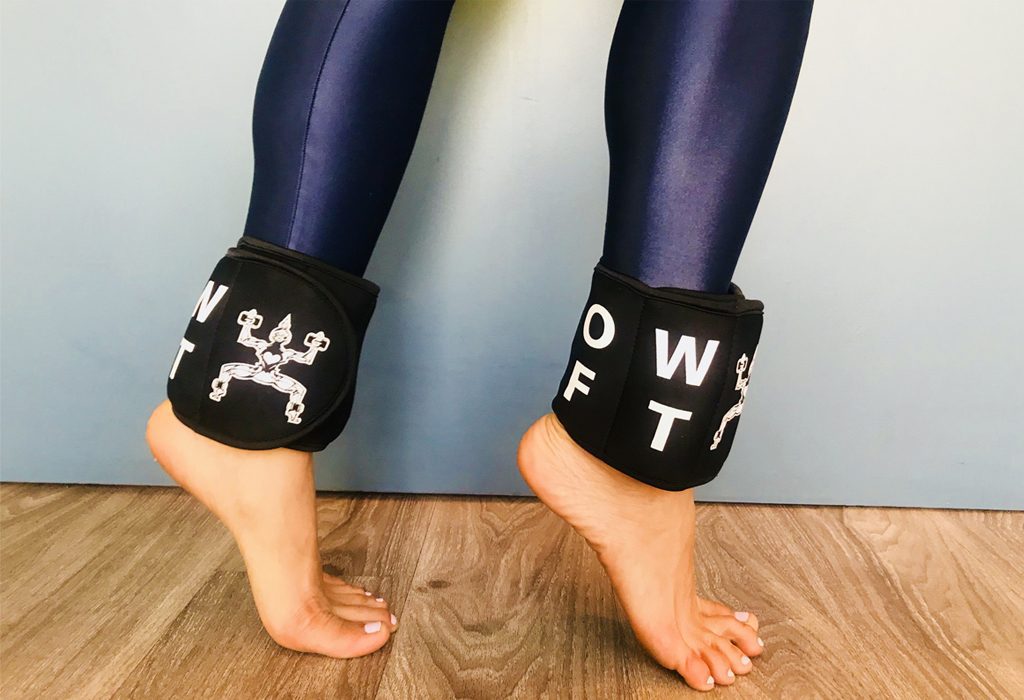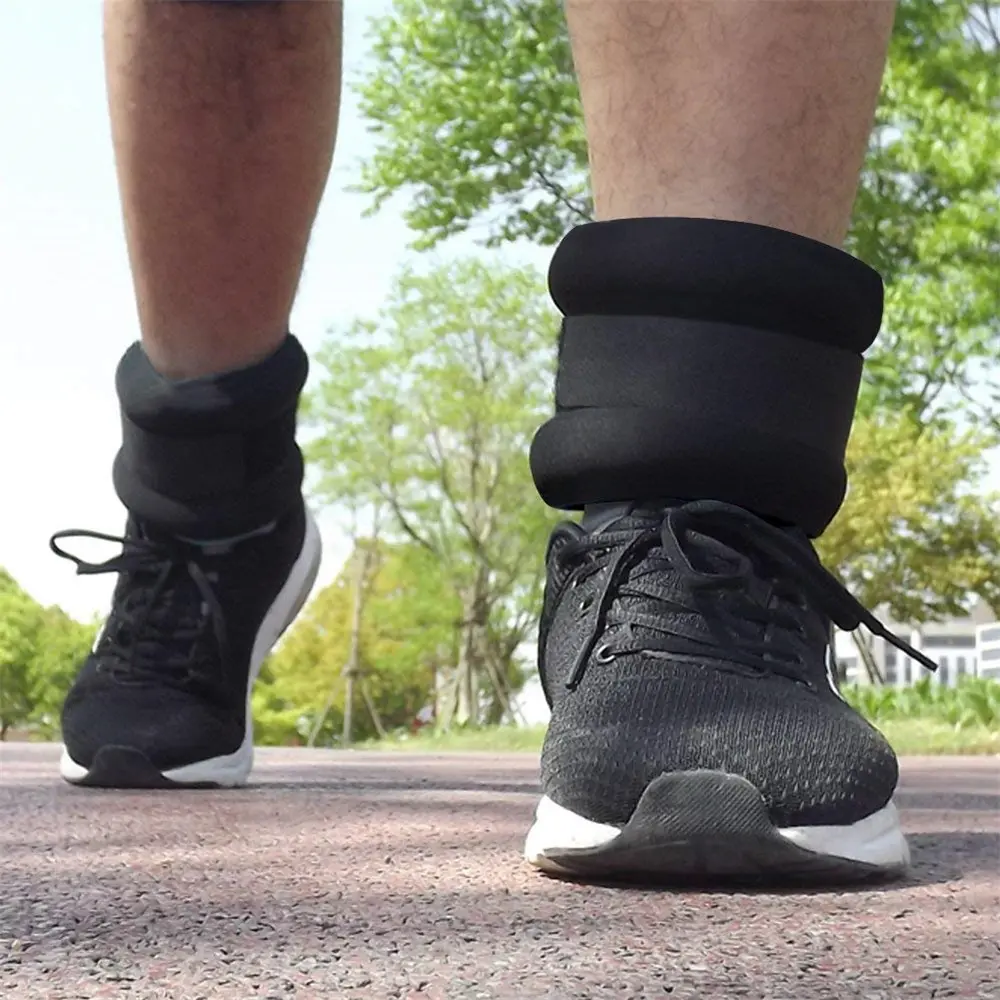
The best online fitness resource you'll ever need. We filter out the BS to ensure you meet your health and fitness goals!

The best online fitness resource you'll ever need. We filter out the BS to ensure you meet your health and fitness goals!

Ankle weights are very fashionable at the moment, with many trainers utilising them with their clients to boost traditional bodyweight exercises. Increasing resistance through a variety of movements in this way will allow you to more closely follow progressive overload, pushing you harder and finding more adaptation as you train.
But how can ankle weights help you, what are their benefits, and how can you use them in your own fitness routine?
Ankle weights boast a versatility that is rare in most pieces of equipment, and that is to be cherished as the greatest of resources. They are easily portable, relatively unobtrusive, and can be used in myriad of interesting, useful ways to simply bump up the workload of any given movement. You can wear them on your ankles (the focus of this article) or on your wrists, part time in the gym or full time around your home or office.
The main benefit of ankle weights is in increasing total load on compound movements. However, they can also be used to isolate certain muscles that may be inactive during sedentary periods, such as the glutes or hamstrings.
The freedom of movement you get with ankle weights is one of the greatest benefits they offer. Some of the exercises listed below are also unique to ankle weights. Though you can easily perform weighted leg raises with a dumbbell or kettlebell, donkey kicks are only really viable with ankle weights (though bands may be another option, with a bit of finagling.)

Part of this is due to the hip joint, which is stimulated by ankle weight usage. Ankle weights allow you to increase load through every direction and range of motion possible. The hip is a ball-joint that can move in many directions, and which incorporates many movement patterns and muscles of different sizes. Training this multi-direction, compound group of muscles and soft tissue will keep your hips healthy and strong and is most easily achieved with ankle weights.
What I would like to do is show you guys various exercises you can do at home with them to strengthen your abs, legs and butt muscles.
The weight you will want for your ankle weights will depend on your own strength and fitness levels. However, 3-5kg should suffice for most of the exercises listed below. Once you adapt and begin to find them easy, consider either increasing this load or adding more reps and sets, or bringing in shorter rest periods, to your routine.
For walking, go for the lower end, around 2-4kg. Remember, when you’re using them for walking, each step is essentially a rep. Too much weight for this volume can put stress on your lower back and pelvis, and higher amounts will change your stride.

But what about the exercises themselves: what are the 10 best exercises you can perform today with your set of ankle weights? Everything listed below is relatively easy to learn: simply find a good set of ankle weights, secure them around your ankles in a comfortable position (not too tight) and give them a go.
Everything below will work best at the 3-5kg mark, though you may want to begin on just 1-2kg while you learn the movement patterns. If they are new moves in any way, adaptation won’t require too much resistance, and lower weights will allow you to nail the motor patterns needed much more effectively.
Bicycle kicks are a great compound movement, hitting quads, hamstrings, glutes, hip flexors and abs and obliques in a big way without spending too much time on any one muscle. To perform them with your ankle weights on:
10 reps on each side is a good starting point. Try going for 3-4 sets, with a 60 second rest between sets. To make it harder, increase weight or reps, or go for a shorter rest period.
A favourite exercise in boot camps and aerobic classes, high knees are a fantastic full body mover designed to shoot your heart rate up and burn your legs and core. For these:
These are best performed in 30 second bursts, with 3-4 sets being a good starting point. To make them harder, either increase weight, speed up, or perform for longer bouts.
Donkey kicks are a staple of butt work, isolating your glutes quite effectively whilst still giving a carry-over benefit to your hamstrings and lower back. If you’re looking for a strong, well defined posterior, this is one for you. To do these:
3-4 sets of 12 reps per leg (so 24 reps if you are cycling between the two) will be ideal for hypertrophy training. Rest for 60 secs between sets.
Leg raise variations are amongst the best core exercises going, pushing your lower abs particularly hard. Two variations have made this list, both of which suit ankle weights incredibly well. They are easy to perform yet are very effective, and you will certainly feel the burn afterwards. For the first variation:
These should be done with lighter weights at first. Complete 12 reps for 3-4 sets if you can, with 90 seconds of rest in between each.
This is the next stage up from the grounded leg-raise and will push you even harder. To do these:
You can also do knee raises from a captain’s chair brace. Still wear the ankle weights, but keep your legs bent and just bring your knees up towards your chest. This will take some of the strain out of the quads and put it all into the abs.
To engage your obliques, simply add a twist, bringing opposite knee towards opposite shoulder, alternating sides.
For all variations, try for a couple of sets of 10 if you can manage. If not, slowly build up to it with as many reps and sets as you can perform. Take 90 seconds of rest between each set.
Here we bring in some lateral glute work, hitting that hip ball-and-socket joint through another of its natural ranges of motion. The gluteus medius will be worked hard here, which is fundamental in building up strong, stable hips.
Keep to a 12 rep range for these, completing all 12 on one side before moving on to the other. Complete 3-4 sets with 30 second rests.
Everybody hates lunges, but they work incredibly well. Though you can do these with dumbbells in your hands or a barbell over your shoulders easily enough, ankle weights also work- particularly for higher rep ranges. Your glutes, quads, calves and hamstrings will feel these even more intensely than they would after squats. To perform:
3-4 sets of 10 reps per leg will be ideal. Take a decent rest period afterwards- 90 seconds or more.
This is advanced and can put a lot of stress on the knees. If you have any knee issues, skip this one. If not, give it a go: it’s one of the best mass builders going for your quads and glutes. Make sure you have a chair next to you or that you are standing next to a wall or table that you can hold onto for support. To perform:
10-12 reps is preferable, for 3-4 sets. However, do as many as you can at the beginning. If you need to work up to 10 reps, that’s fine. As with lunges, take a longer rest between sets: 90 seconds should do it.
Funny name for a great core exercise. You can do these every morning if you want to, either with or without weights. With ankle weights is best, of course, but you may wish to change up the intensity and rep ranges every so often. They will strengthen your core muscles and lower back. To do bird dogs:
Go for high reps with these: 20 for each side is a good target. 3-4 sets with a 60 second rest will get your core working hard.
This is another good exercise for strengthening the lower back, as well as working your outer thighs and glutes. To do fire hydrants:
Again, high reps work best here. Go for 20 reps per set, for 3-4 sets. A 30-60 second rest after each should be enough to get you ready for the next set.
This isn’t included above as it’s not really a separate exercise. But as mentioned above, walking around, going about your day-to-day life with ankle weights on can be very beneficial. Each step will be more cardiovascularly and metabolically demanding, and this added impact will improve bone density over time.
Keep the weights light, even as you get more advanced.
You should by now have a good idea of what ankle weights are good for, and what you can do with them. Perform the above from the comfort of your own home or at the gym, include them in an existing program or just put a few together every day. Either way, you should find your legs, core and lower back getting stronger and more muscular with each passing day.